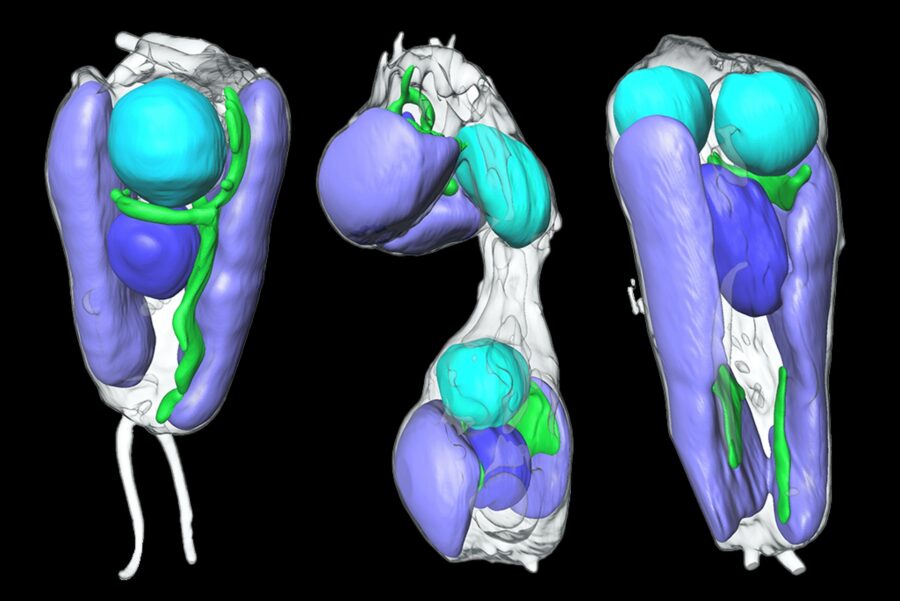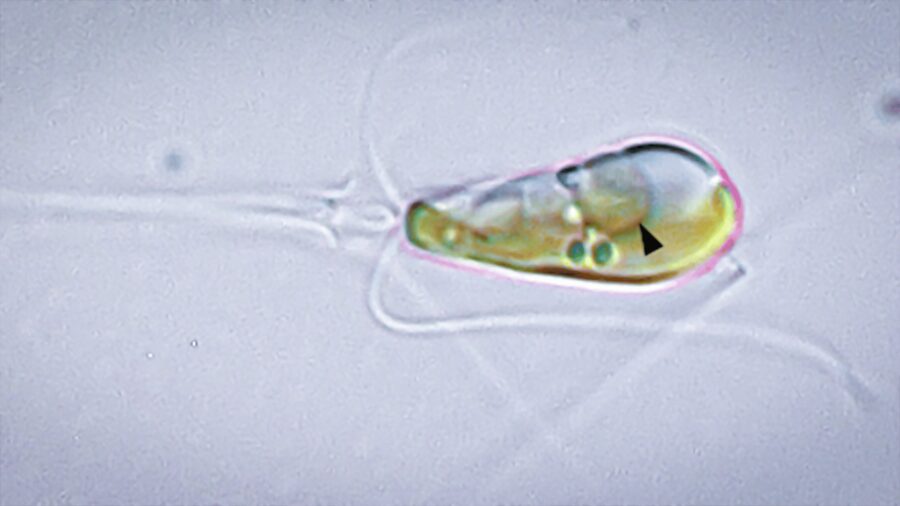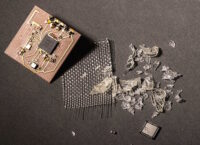A team of scientists from the Lawrence Berkeley National Laboratory in Berkeley (USA) has discovered two life forms that have merged into one organism, an evolutionary event that last occurred 1.6 billion years ago. This is reported by New Atlas.
This phenomenon is called endosymbiosis, and it occurs when one microbial organism takes over another and begins to use it as an internal organ.
In exchange, the host cell provides the symbiosis with nutrients, energy, protection, and other benefits until the symbiosis can no longer survive on its own and turns into what is known as an organelle in microbial cells.
A species of algae called Braarudosphaera bigelowii has absorbed a cyanobacterium that allows them to “fix” nitrogen directly from the air and combine it with other elements to create more useful compounds.
Usually, plants and algae obtain nitrogen through symbiotic relationships with bacteria that remain separate. At first, the scientists thought that Braarudosphaera bigelowii was related to the bacterium UCYN-A in this situation, but upon further examination, they found that the relationship was much closer.

It was found that the size ratio between algae and UCYN-A remains the same in different related algal species. Their growth is controlled by nutrient metabolism, which leads to a linked metabolism.
“That’s exactly what happens with organelles,” said Jonathan Zehr, an author of the studies. “If you look at the mitochondria and the chloroplast, it’s the same thing: they scale with the cell.”
Next, the scientists found further evidence of endosymbiosis by using a powerful X-ray imaging technique to see the inside of living algal cells and found that their replication and cell division were synchronized.
By comparing the proteins in the isolated UCYN-A with those in algae cells, the scientists found that the isolated bacterium could produce only half of the proteins it needed and relied on the algae to provide the rest.
“That’s one of the hallmarks of something moving from an endosymbiont to an organelle,” said Zehr. “They start throwing away pieces of DNA, and their genomes get smaller and smaller, and they start depending on the mother cell for those gene products – or the protein itself – to be transported into the cell,” Zehr said.
The team says that UCYN-A is a full-fledged organelle called a nitroplast. According to their observations, this phenomenon began to develop about 100 million years ago.
Scientists will continue to study nitroglycerin nanorods to find out if they are present in other cells and what effect they might have. This could give scientists the opportunity to incorporate nitrogen fixation into plants to grow better crops.



Loading comments …